by Dianne Minnicucci, September 2022
The resurgence of the Black Lives Matter movement has motivated schools, colleges and universities to examine the cultural diversity of their curricula and move towards the decolonisation of subjects. Dianne Minicucci, subject leader for photography and a teacher of art at Thomas Tallis school in London, asks how teachers of art, design, craft and photography can begin to diversify, decolonise and ‘make the invisible visible’.
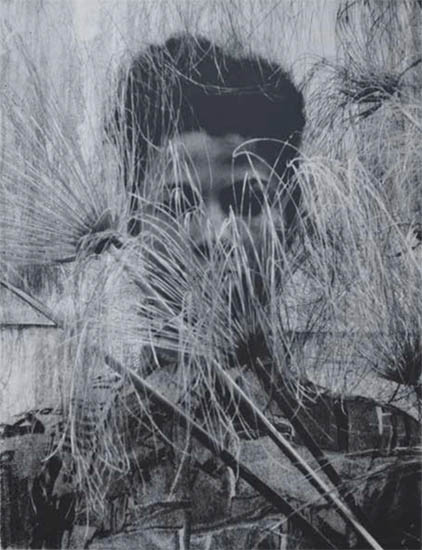 |
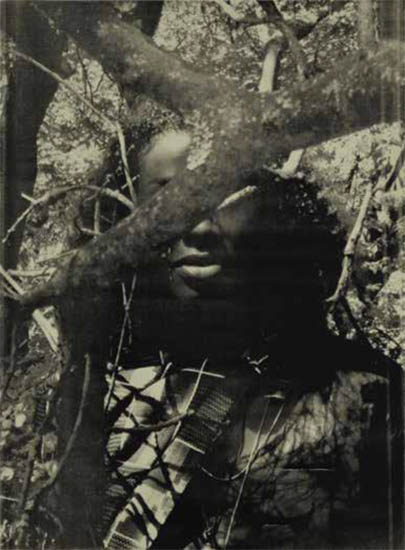 |
|
Zohra Opoku: Cyperus Papyrus, 2015 Screen print on hand washed paper Courtesy of Mariane Ibrahim |
Zohra Opoku: Life Oak Tree, 2015-16 Screen print on textile Courtesy of Mariane Ibrahim |
. .
Following the resurgence of the global Black Lives Matter movement during 2020, many schools, colleges and universities have begun to examine the cultural diversity of their curricula. At the time, I felt fortunate that our school were openly discussing the need for diversity and beginning the process of decolonisation. Our visual arts department began to participate in wider reading and research, collating a list of articles. We also had discussions with our students about the importance of using a diverse range of exemplar artists.
Decolonisation was necessary for all of us. I am a black woman and I too had to decolonise my thoughts. I felt that I had been conditioned to accept the traditional canon of white, male, western artists as normal. It was uplifting and inspiring for me to unearth a wealth of black artists and photographers. I felt empowered by the work I had discovered during my research and keen to share my findings with the students so they too could be excited by it. It is important for our students to know that they can engage with artists and photographers of all cultures. We recognised that the changes to our curriculum would be ongoing and that decolonisation would take time.
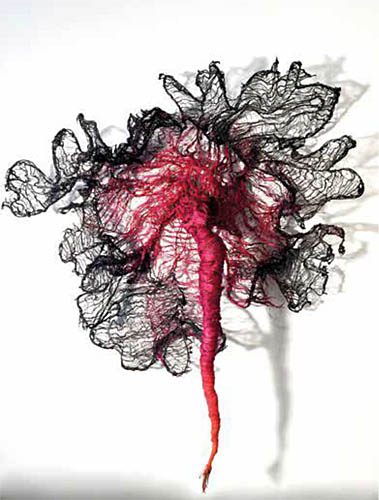
Nnenna Okore: Things that meet the eye, 2017.
Cheesecloth, jute string, dye and wire.
Courtesy of Nnenna Okore
I teach photography and art at Thomas Tallis School, a large mixed comprehensive school in South East London. I began to read books about decolonisation, such as Decolonising the Camera by Mark Sealy, who writes, ‘Decolonising the camera functions as a critical dialogue with colonial and imperial photographic histories, and the social and visual spaces they occupy.’ Sealy goes on to describe the relative absence of people of colour in the histories of art as ‘cultural erasure’ and says, ‘A key aspect of decolonising the camera is not to allow photography’s colonial past and its cultural legacies in the present to lie unchallenged and un-agitated, or to be simply left as the given norm within the history of the medium.’ Sealy is the director of Autograph ABP (formally the Association of Black Photographers), which has produced The Missing Chapter: Black Chronicles. This is an ongoing archive research programme which aims to popularise images of African, Caribbean and Asian people from the Victorian and early Edwardian periods.
Autograph has been exhibiting and archiving the work of a diverse group of photographers and artists since 1988. Their exhibitions explore issues of identity, representation and social justice. I have been visiting Autograph since the 1990s when it also housed the Institute of International Visual Arts (Iniva), another organisation dealing with identity and representation for artists of colour, predominantly artists of the African and Asian diaspora. In November 2017, I saw the exhibition In a Different Light, which included the work of many black photographers from the UK. I felt empowered – I was reliving my own history through these images, which I then wanted to share with my students.
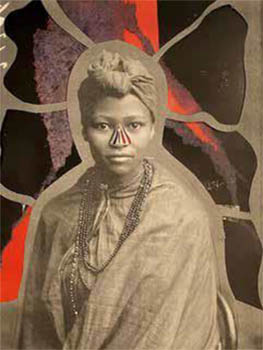 |
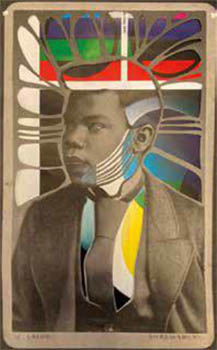 |
Students’ work in response to using a diverse range of exemplar artists
As teachers and educators, we must be aware of the organisations and institutions that exist to celebrate the cultural contribution made by black/PoC artists such as Autograph, Iniva, and 198 Contemporary Arts and Learning, and find new ways to collaborate with them in order to build a rich and varied curriculum. All this begs the question of what can we do as teachers of art, design, craft and photography in order to diversify and decolonise our curricula. How do we make the invisible visible? How do we ensure that artists of colour are fully visible to our students so that they can never again be erased from culture? I believe we must, first and foremost, engage in deep research. Part of my own research involved discovering a range of contemporary black artists. What can I learn from them in order to design engaging schemes of work? My growing knowledge of their work helps me think about the relevance of art, craft and design for young people today so that they can understand the world and can change it for the better.
Social media, particularly Instagram, has been key in locating and promoting artists of colour, as well as organisations and galleries that are dedicated to exhibiting the work of Black, Asian and African artists. One example is the October Gallery in London, which exhibits work from international artists such as El Anatsui, Rachid Koraïchi, Romuald Hazoumè, Nnenna Okore and Aubrey Williams, and produces resources for educators. I have also invested time in reading the articles that my colleagues and I collated.
I then spoke to the writer and journalist Sean O’Hagan, who writes about photography for The Guardian. He was of the opinion that educators, curators and gallerists share a collective responsibility to ensure that work from a diverse range of artists is exhibited in museums and galleries. He also said that writers and critics have an individual responsibility to consider the work of a much more diverse range of artists and photographers. He commented that there is a glaring problem with the striking lack of diversity among the staff of the big art institutions, with one exception. Azu Nwagbogu is the founder and director of the African Artists’ Foundation, an organisation based in Lagos that is dedicated to the promotion and development of contemporary African art. There is a wealth of contemporary black artists at the moment and many have emerged from Africa’s thriving art scene. One such artist is Zaneli Muholi, an activist whose work has reflected the lives and struggles of black lesbian and trans people in her native South Africa, first shown at Autograph in 2017.
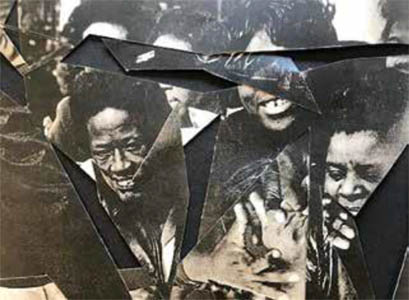 |
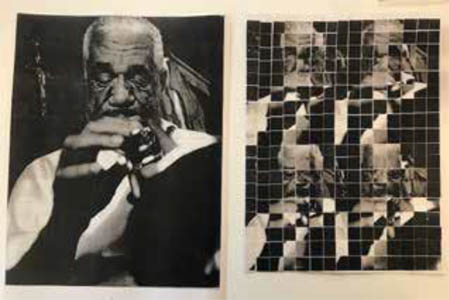 |
Students’ work in response to using a diverse range of exemplar artists
Students from ethnically diverse communities have often been presented with negative images of themselves by the media. Teachers have a vital role to play in finding and sharing positive images of black creativity to offset this damaging legacy. How can we introduce images of and by black people so that they are viewed as culturally rich and visually engaging rather than negative in any form?
The late cultural historian Stuart Hall was an eminent writer on race and representation within visual culture, specifically photography and film. In his essay New Ethnicities, 1988, he wrote, ‘The struggle to come into representation was predicated on a critique of the degree of fetishization, objectification and negative figuration which are so much a feature of representation of the black subject. There was a concern not simply with the absence or marginality of the black experience but with its simplification and its stereotypical character.’ This article, written over 30 years ago, highlights the issues of representation at that time. Sadly, not much has changed. How do we change the way in which white people profit from the creativity of black people without ever allowing them the status, visibility and complexity that they deserve?
If we think about the term ‘decolonising the curriculum’, it is about much more than that. It is about accepting that the art history we have been presented with has excluded artists of colour and that the negative images of black people are not the ones that we need to engage with. It is crucial that we delve into the archives and uncover what is there that has been unjustly overlooked or ignored. It is also about having uncomfortable conversations about privilege, addressing our preconceptions and promoting colleagues of colour in order to have a more diverse range of teachers.
We need to engage in unearthing the wealth of work by black artists and people of colour. And, in doing so, we have to think deeply about the kind of images that we use, ensuring that they are not negative or objectified images of the ‘other’. Above all, it means making the invisible visible, reclaiming our past history and culture, and actively engaging with the turbulent present.
Dianne Minnicucci from England is author of visiblediversity.com, a website dedicated to making diversity visible within the art/photography curriculum.
Instagram: @amazingblackartists
Visit Dianne Minnicucci's website www.visiblediversity.com
